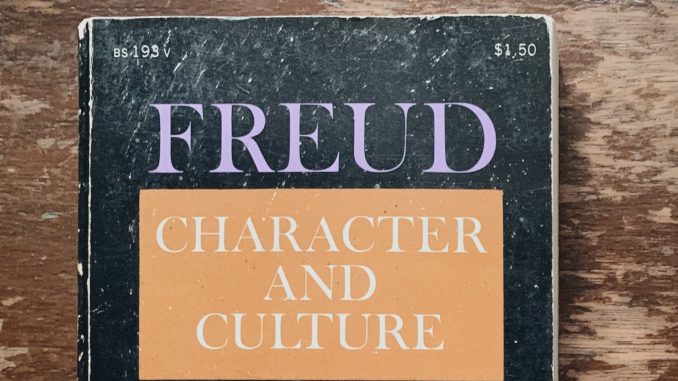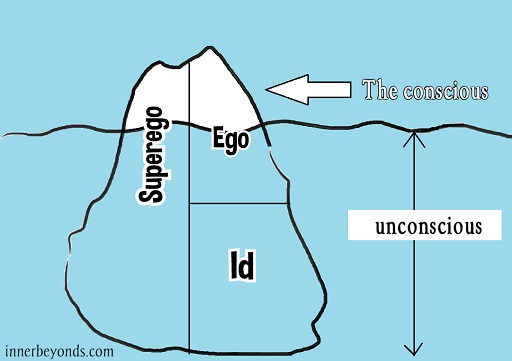
The theatrics of dreams often carry emotional imprints that leave many questions. The world of dreams appears to surface from a deeper part of the mind – the unconscious realm. Sigmund Freud, a neurologist and founder of psychoanalysis, believed that dreams trace to the unconscious. To Freud, the meaning behind dreams is primarily sexual, pleasure-seeking and repressed. Beyond Freud’s sexual interpretation of dreams, he theorized that without desire, we cannot dream. Years later, it was later scientifically proven that damage done to part of the brain responsible for desire, results in the inability to dream.
Freud’s view of the mind can further the understanding of dreams:
Freud’s psychoanalytic perspective revealed the power of the unconscious over dreams. He theorized that the mind was composed of 3 realms:
1. The Id – The Id is like a greater part of an iceberg hidden under water. This is the completely unconscious realm of the mind. According to Freud, it is comprised of our base instincts that seek to satisfy primitive desires . This is in accordance with the pleasure principle – the drive to seek pleasure and avoid pain.
2. The Superego – This is the portion of the mind that is part conscious and part deeply unconscious. The Super Ego is responsible for ideas of perfect morals. It has a need to strive for moral superiority.
3. The Ego– The ego is like the tip of an iceberg that surfaces above water. This realm of the mind is part conscious and part unconscious. The ego strives to create balance between the impulsive instincts of the Id and the idealistic morals of the Super Ego.

From this, Freud describes dreams as an interplay between the different realms of the mind. In a dream, one part of the mind may seek to gratify desires. However, another part of the mind may seek to censor desires out of shame, denial or embarrassment. With this mental interaction, Freud draws a distinction between the manifest and the latent content of a dream. They are as follows:
1. The manifest content:
Like the cover of a book, the manifest content is the dream as it appears. For example, the description of a dream as experienced is known as the manifest content. According to Freud, the manifest content itself is considered meaningless. Therefore, it only serves as a mask that hides the true meaning.

2. The latent content:
Like a message behind a story, the latent content holds the meaning of a dream. According to Freud , the latent content mostly encompasses unconscious desires that are often denied. As a result, Freud claimed that the latent content is usually disguised behind the appearance of the dream.

Why are dreams so difficult to interpret ?
Freud believed that the complex nature of dreams reflect a compromise between the conscious and unconscious mind. From this, he explained this as the reason behind the “alien appearance” of a dream. If desires are deeply connected with the ability to dream, perhaps the meaning of the dream is found through desires. These desires could be as simple as, I wish I studied more; I wish for a puppy ; or I wish I was someone else. However, Freud believed that deeper unconscious desires were behind complex dreams.
Freud theorized that most unconscious desires trace to childhood desires:
These childhood desires are believed to possess sexual and incestuous contents – which are repressed by the mind. Freud believed that when the mind represses desires, it reflects through the dream as a distortion. This occurs when the content of the dream is so distorted or bizarre that its meaning is not easily traced. According to Freud, the degree of dream distortion depend on the magnitude of internal conflict. In theory, the more bizarre a dream appears – the greater the mental conflict.

Freud believed the true meaning behind a dream is disguised through a process called “dream work.”
According to Freud, the unconscious mind uses “dream work” to hide repressed wishes. When a dream appears confusing and odd, this is the experience of a distortion. Dream distortions may appear in the following 3 ways:
1. Condensation:
In dreams, condensation occurs when a single dream image carries two or more familiar features. A dream character may look like an old best friend but acts like a mother. Another common form of condensation is when a word combines two or more parts of other words into one. According to Freud, condensation is an example of a dream distortion. In dreams, distortion may hide the true meaning behind a mix of images.

2. Displacement:
This occurs when an emotion associated with an intended person or object, is transferred onto a meaningless or unrelated entity in the dream. For example, a dream of punching a clown may reflect a repressed anger at someone else. In the dream, this denied anger may transfer onto the image of a clown.
3.Symbolism:

This is when an abstract concept or emotion, is represented by a dream image. Freud is known to associate almost all dream symbols with sexual symbols. According to Freud, sharp or upright dream symbols such as a pencil are symbolic of the penis. Similarly, open or soft dream images such as a pillow or keyhole are symbolic of the vagina. Additionally, any repetitive acts experienced in dreams – such as running or stirring are symbolic of sexual acts.
Desires may serve pure or shameful intentions, and may reveal themselves through very vivid dreams. Whether a dreamer desires revenge, lusts for sex, or craves success – Freud draws attention to hidden motives within the unconscious. Above all, his investigation into the unconscious mind through dream analysis, directs a way for us to explore internal conflict and discover something more.
– By Nikita King
